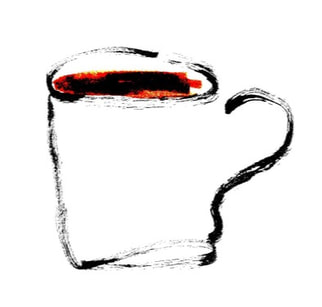 The drier your mouth feels, the more tannic the wine. The drier your mouth feels, the more tannic the wine. Tannins, to me, are the absolute magic of red wine. They contribute longevity, color, flavor, body and overall textural richness. While I adore tannins, I am simultaneously and confusingly captivated by grape varieties that are known to be low in tannins, such as Grenache, Frappato and Gamay. Just when I think, “Ah, ha! I have finally discovered my Holy Grail of wine characteristics,” plenty of opposite examples have me re-thinking my earnest declarations. This leads me to believe that there are no hard-and-fast rules about what makes a wine great. Maybe instead of seeing a bottle of wine as possessing specific attributes that you either chase or run away from, it is more open-minded and adult to view each bottle as an individual whose secrets are yet to be revealed. But I digress, so let us explore the world of tannins and why they are a subject of fascination and delight for drinkers, scientists, and industry insiders. Tannins provide structure to a wine, just as your skeleton supports your body. Without tannins, red wine would be cloyingly sweet. That is why tannins are one important element of a wine’s balance, along with acidity, fruit concentration, sweetness, alcohol, and texture. You eat and drink tannins as a matter of course because they are present in coffee, tea, dark chocolate, walnuts, cranberries and other plant-based foods and beverages. Oak can also contribute tannins to a wine, especially new oak. Producers sometimes use additives such as oak powder to increase the perception of tannins; this practice is associated with large-scale, low-end wines. Seriously, can you see yourself drinking anything that contains oak powder? Tannins are responsible for the astringent, mouth-puckering sensation of dryness you get in the mouth when drinking wine. When a red wine with firm tannins enters your mouth, it binds to the proteins in your saliva and washes much of the saliva away, leaving your mouth with a feeling of dryness and astringency, even bitterness. To determine whether a wine is high or low in tannins (or something in-between), pause to consider how dry your mouth feels during and after a drink. The dryer your mouth feels, the more tannic the wine. When you drink a delicious wine that is generous with tannins, even while the wine is still in your mouth and yet to be swallowed, why hurry? Experience wine's aromas, flavors and sensations. Much of wine tasting is thoughtfully paying attention to what is in the glass and your mouth. Drink plenty of water between sips to help your body hydrate and to produce more lubricating saliva. Pace yourself.  Tannins are present in coffee, tea, dark chocolate and other plant-based foods and beverages. Tannins are present in coffee, tea, dark chocolate and other plant-based foods and beverages. Those who are new to wine may find tannins especially challenging, even off-putting, and will find fruity or sweet wines to be much more acceptable. Eventually, however, many drinkers come to appreciate the complexity and added dimensions that tannins bring to the table. This phenomenon is similar to when you were a toddler, favoring sweets. As you grew into adulthood, your palate evolved and you began to accept and increasingly enjoy the bitterness you found in arugula, green tea, artichokes, dark chocolate, radicchio, grapefruit, beer and other food and drink, right? If you are what is known as a supertaster, experiencing foods and flavors more intensely than most people, you may find it hard to enjoy a wine generously endowed with tannins. Tannins are extracted from the grape’s skins and seeds (and sometimes the stems) when they are soaked along with the juice, before, during, and sometimes after fermentation. As red wines of high quality age, their tannins soften and interact with other elements in the wine to develop deep and complex flavors as well as a more soft and mellow mouthfeel. Aged fine wines are sometimes described as having “resolved tannins,” meaning that they have smoothed out and softened their astringency. You and I do the same thing, smooth out and soften as we age, don’t we? Wines harvested early, or in a cool vintage or location, are prone to have more aggressive tannins because the grapes have not had enough sunshine, warmth, and hang time to allow the tannins to reach full maturity. Wines harvested later, or in a warmer vintage or location, often have softer, more developed tannins. Some grape varieties have high tannins, some have low, and many have something in-between. The winemaker is tasked with understanding the tannins on offer and producing a beverage that is in balance with what nature has provided. Some grape varieties are prone to ripening unevenly on the vine, even within the same cluster, so quality producers pick only ripe grapes from the cluster, returning later for another pass at the ripe fruit. Zinfandel is an example of a grape variety that ripens unevenly. Tannins are more plentiful in grapes that have thick skins, for example, Nebbiolo. Thin-skinned grapes, such as Zinfandel, have fewer tannins. Under-ripe grapes have more tannins than ripe grapes. Nature purposefully keeps her grapes unappetizingly tannic and acidic until she is certain that the seeds are perfectly ripe and ready to be eaten and dispersed for the propagation of the species. Nature also works to woo us (along with birds and other animals) by producing luscious fruit, so she intensifies the flavor molecules in the grapes as ripening approaches. Seriously, can you see yourself drinking anything that contains oak powder? Managing tannins is an important aspect of red winemaking, and the protocol varies from vintage to vintage, winemaker to winemaker, and vineyard to vineyard. Tannins are highly complex in their makeup, behavior and development, and scientists have only begun to bring some of their many secrets to light. Without tannins, red wine would taste a lot like white wine, don’t you think? In fact, a producer can make white wine from red grapes through divorcing the grapes from their skins as quickly as possible after harvesting. However, it is impossible to make red wine from white grapes unless there is some sort of unconventional and off-putting intervention involved, such as adding food coloring. Tannins can be further described by their texture or mouthfeel. You might have heard a drinker describe tannins as “silky” or “grippy” or “sandy” or “green” or “loose-knit” or “fine-grained.” These are all descriptors that go beyond quantity to describe qualities. When you drink a red wine, think about not only the power or volume of the tannins, but also how you might describe the quality or texture of the tannins. “Firm,” “dense,” and “tightly-knit” attributes usually indicate a wine with tannins playing a key role in the wine, such as a Cabernet Sauvignon or Tannat. “Silky” or “polished” connote tannins that dance across the tongue and seemingly disappear, as with a Pinot Noir or Carménère. “Chewy” can mean tannins that coat your mouth to the point where you could practically masticate them, like a Syrah might. You might want to use terms like “harsh” or “aggressive” or “astringent” when describing a wine that is out of balance. This type of appreciation takes time and experience, so do not worry if apt descriptors do not leap from your lips when you evaluate a wine. Just be aware that these types of descriptions exist and are used by wine lovers to communicate their perceptions. This is no different than a baker comparing large-crystal sanding sugar for sprinkling atop cookies to the texture of everyday white granulated sugar.  Many drinkers appreciate the complexity and added dimensions that tannins bring to the table. Many drinkers appreciate the complexity and added dimensions that tannins bring to the table. Just yesterday I decided to open a 2018 Catena Malbec from the Paraje Altamira appellation in Mendoza, Argentina. Between us, I have come to develop a specific affinity for the texture of Malbec tannins. I view Malbec’s grainy texture as a special treat, like some people might view lobster or truffles (or sanding sugar) as a delight. This particular appetite came about by accident. I was analyzing a Grenache and returned to the kitchen to refill my glass. Absentmindedly, I grabbed the wrong bottle, poured the wine into the glass and returned to my seat by the window. (My analysis of wines involves sitting by a window to bring natural light into the mix.) The grainy texture of the tannins hit me like a slap across the face, and I knew immediately that this was not the Grenache I thought I had poured. The wine in my glass was, in fact, a 2018 Zuccardi Malbec Concreto from the same region as my Catena Malbec. The rustic graininess was in stark contrast to the fruity, low-tannin Grenache I was expecting. While confusing, it was at the same time utterly thrilling in an earthy kind of way, like laying down and rubbing your hair into the wet sand at the beach while the waves gently lap over you. (I did this once and only once; it took several washings to clean away the sand from my hair. So much for giving into my lust for experiencing the ocean’s earthy, grainy textures.) When possible, take a moment to compare and contrast a low-tannin variety with a high-tannin variety. This exercise may help you gain an appreciation for different tannin characteristics and can be especially fun to do in a blind-tasting situation. Just have a friend pour various wines for you and make notes about the tannins for each glass. Do not hold the wine in your mouth for too long, because if you do, almost any wine will seem to gain in tannic volume and your palate will tire. Then look forward to the big reveal. Of course, if your friend is also enamored with wine, you can switch places and pour for her blind tasting. To save time, you might both pour in separate rooms and then do the blind tasting together, which to me sounds like the most fun. Low Tannin Varieties Barbera Blaufränkisch/Lemberger Bonarda/Douce Noir/Charbono Bobal Carménère Chambourcin Ciligiolo Cinsault Corvina Counoise Frappato Gamay Garnacha/Grenache Liatiko Négrette Pinot Noir Primitivo/Zinfandel Schiava High Tannin Varieties Aglianico Baga Bobal/Bovale Cabernet Sauvignon Carignan/Cariñena/Mazuelo Dolcetto Freisa Fumin Gamaret Lagrein Limniona Malbec Mourvèdre/Mataro/Monastrell Nebbiolo Negroamaro Nero d’Avola Mondeuse Noire Petite Sirah Petit Verdot Pignolo Pinotage Regent Ruchè Sagrantino Sangiovese Syrah/Shiraz Tannat Tempranillo Touriga Nacional Trousseau/Bastardo This is one in a series of Grape Detective blogs featuring the attributes of wine and how your love for a specific wine grape may lead you to discover new grapes with similar characteristics. The focus of the list is grape variety and does not include blends, wine regions, or styles.
0 Comments
|
AuthorLyne Noella Archives
October 2022
Categories
All
|


 RSS Feed
RSS Feed
